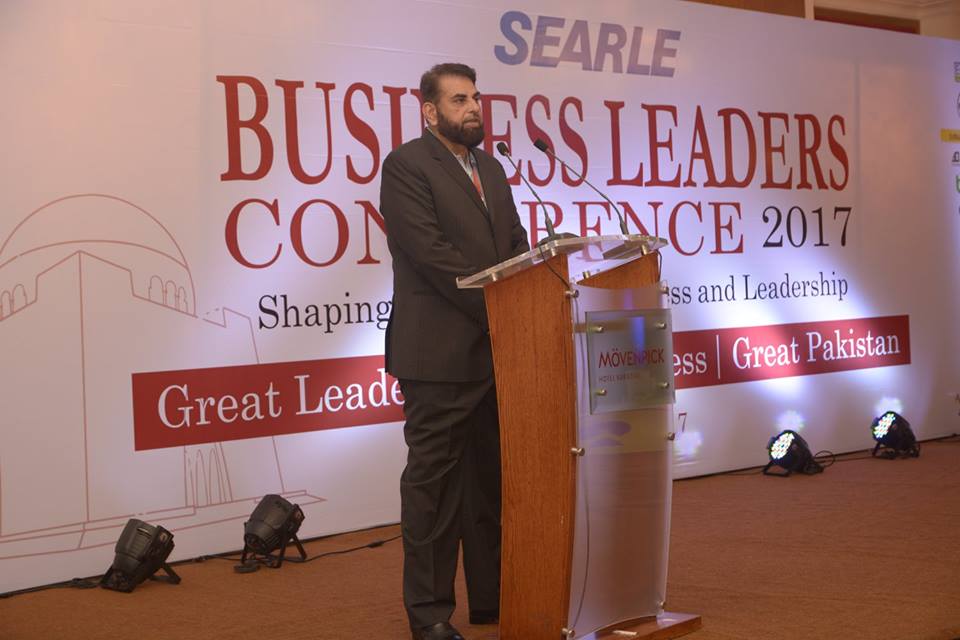Balancing Results and Relationships, Humayun Jamshed - MD Islamic Bank, France
Mr. Humayun Jamshed, MD & senior director at Islamic banking, France, at Movenpick Hotel, Buisness Leaders Conference held at 16th of August, 2017 spoke on “Balancing Results and Relationships”.
Based on his experience he conveys that the leader should have technical expertise and an effective
networking with people. Typically, managers rise through the ranks by impression of a strong command of the technical elements of their jobs and they focus on accomplishing their teams’ objectives.
When they are challenged to move beyond their functional specialties and address strategic issues facing the overall business, many managers do not immediately grasp that this will involve relational tasks, not analytical. Nor do they easily understand that interactions and exchanges with a varied array of current and potential stakeholders are not diversions from their “real work” but are actually at the heart of their new leadership roles.
Emerging leaders are seen approaching their targets through different types of networking. They include operational, personal, and strategic. These three types of networking played a vital role in their transitions. The first kind of networking helped them manage existing internal responsibilities, the second boosted their personal development, and the third opened their eyes to new business directions and the stakeholders they would need to count on. While our managers differed in how well they pursued operational and personal networking, we discovered that almost all of them do not utilize strategic networking.
This is why leaders must try to reach people and know them with efforts and then
give them directions about organizational goals. A successful leadership evolution requires a shift from the boundaries of a typically defined operational network.
Ambitious leaders must learn to build and use strategic networks that cross functional and organizational restrictions, and then link them up in unique and innovative ways. It is a challenge to
make the leap from a lifetime of functional contributions and hands-on control to the ambiguous
process of building and working through networks. Leaders must find novel ways of defining themselves and develop new relationships to anchor and feed their developing personalities.
They must also accept that networking is one of the most significant requirements of their new leadership roles and continue to allot enough time and effort to see it pay off.
Based on his experience he conveys that the leader should have technical expertise and an effective
networking with people. Typically, managers rise through the ranks by impression of a strong command of the technical elements of their jobs and they focus on accomplishing their teams’ objectives.
When they are challenged to move beyond their functional specialties and address strategic issues facing the overall business, many managers do not immediately grasp that this will involve relational tasks, not analytical. Nor do they easily understand that interactions and exchanges with a varied array of current and potential stakeholders are not diversions from their “real work” but are actually at the heart of their new leadership roles.
Emerging leaders are seen approaching their targets through different types of networking. They include operational, personal, and strategic. These three types of networking played a vital role in their transitions. The first kind of networking helped them manage existing internal responsibilities, the second boosted their personal development, and the third opened their eyes to new business directions and the stakeholders they would need to count on. While our managers differed in how well they pursued operational and personal networking, we discovered that almost all of them do not utilize strategic networking.
This is why leaders must try to reach people and know them with efforts and then
give them directions about organizational goals. A successful leadership evolution requires a shift from the boundaries of a typically defined operational network.
Ambitious leaders must learn to build and use strategic networks that cross functional and organizational restrictions, and then link them up in unique and innovative ways. It is a challenge to
make the leap from a lifetime of functional contributions and hands-on control to the ambiguous
process of building and working through networks. Leaders must find novel ways of defining themselves and develop new relationships to anchor and feed their developing personalities.
They must also accept that networking is one of the most significant requirements of their new leadership roles and continue to allot enough time and effort to see it pay off.
“Networking is an investment in your business. It takes time and when done correctly can yield great
results for years to come”- Diane Helbig



Comments
Post a Comment